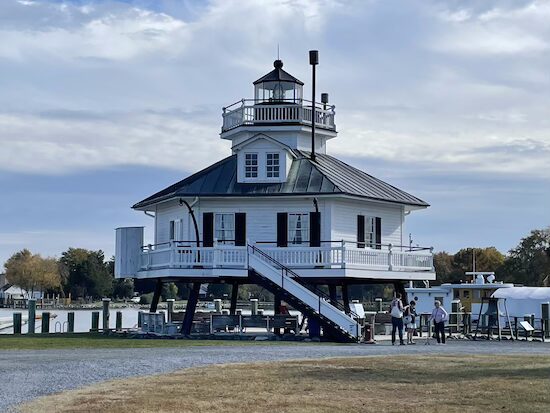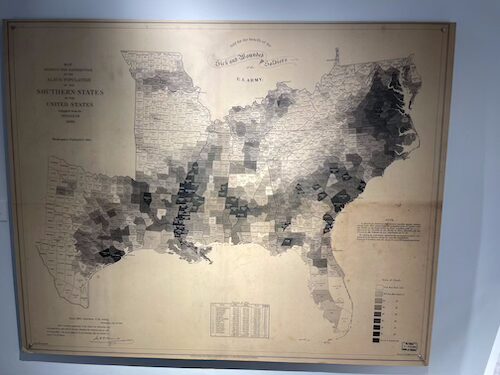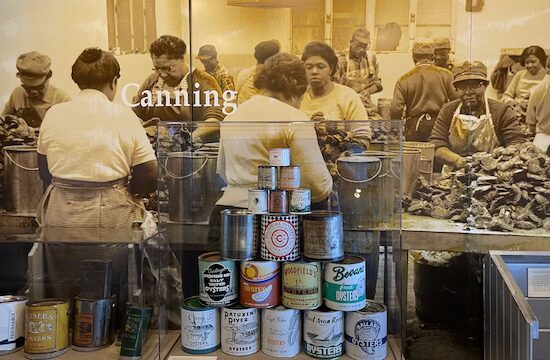Mark’s Score 9.5

The Chesapeake Bay Maritime Museum (CBMM) is one of the premier museums on the Delmarva. Their ambitious mission is to preserve the history, culture, and environment of the entire Chesapeake Bay area. The CBMM was a project of the Talbot Historical Society and opened its doors to the public in 1965. It is located on Navy Point (a short walk from Talbot St) on land that used to house shipyards, and seafood packing houses. Today the museum campus encompasses 18 acres and 35 buildings. It also houses the largest collection of Chesapeake Bay watercraft in existence, totaling 85 vessels. They even have a working shipyard open to the public.
The museum contains exhibits highlighting the stories of, ship building, maritime travel, oystering, crabbing, fishing, waterfowling, and slavery. There were many plantations on the Eastern Shore. Maryland was one of the last states to abolish slavery, as it was not covered by the Emancipation Proclamation of 1863. The Eastern shore is also the home of two very famous people in the anti-slavery movement, Fredrick Douglas and Harriett Tubman.

I visited the museum on an unseasonably hot day in October. There is so much to cover, more than can be reasonably done in a 500-word blog post, so I will just review the highlights of my visit.
The slavery exhibit is the first exhibit after entering through the visitor center. The exhibit contains the home of Fredrick Douglas’ sister as well as a typical slave cabin. Though famous for his oratory in opposition to slavery, the Douglas family were not slaves. For me, the most moving part of the exhibit was the map showing the 1860 slave population by county. The map makes clear that Maryland was at the center and not the periphery of slavery. Maryland was every much a slave state as Alabama.

After visiting the slavery exhibit, I walked over to the oystering, crabbing, fishing exhibit. The Chesapeake Bay is famous for its oysters, crabs, and eels. One of the fun parts of this exhibit is that they allow you to fish for oysters, crabs, and eels right off the exhibit peer. I tried my hand at oystering and fishing for eels. I didn’t catch any eels but I did dig up a couple of oysters. I ended this tour at the shipyard exhibit. The Chesapeake is famous for its sailing craft, the most famous being the Skipjack. But the skipjack is only one of many craft types made and sailed on the Chesapeake. Given the heavy shipping traffic on the bay, the Chesapeake is also famous for its unique low-slung lighthouses. The CBMM has preserved one of these unique structures in the watercraft exhibit.

I have been to this museum multiple times over the years. Whenever I have out-of-town guests, I bring them here. No matter how many times I go, I always come away having learned something new about my adopted state.

Leave a Reply